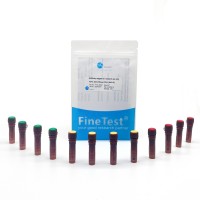Differentiating Embryonic Stem Cells into Embryoid Bodies
Since the early 1980s, embryonic stem (ES) cells have been isolated from the inner cell mass of the preimplantation blastocyst (1 –3 ). They can be maintained in a pluripotent state for indefinite periods of time in the presence of the leukemia inhibitory factor (LIF) or in coculture with mouse embryonic fibroblasts (MEFs). When cultured in the absence of LIF, ES cells differentiate spontaneously, forming three-dimensional (3D) aggregates called embryoid bodies (EBs, Fig. 1 ). EBs recapitulate many aspects of cell differentiation during early mammalian embryogenesis (4 ,5 ) and give rise to mature cells of all three germ layers (reviewed in ref. 6 ). The EB system is an extremely valuable tool for the investigation of embryonic development in vitro because it is challenging and time-consuming to isolate early-stage cells from developing embryos. Moreover, EBs can be used when difficulties arise to determine the cellular basis for embryonic defects or the interpretation of knockout phenotypes, especially those complicated by early embryonic lethality. In addition, great efforts are made to define protocols to preferentially direct ES cell differentiation as EBs toward one single cell fate, therefore providing a source of normal cells and raising opportunities for therapeutic interventions to correct cell/tissue damage and/or dysfunction.
![预览]()






